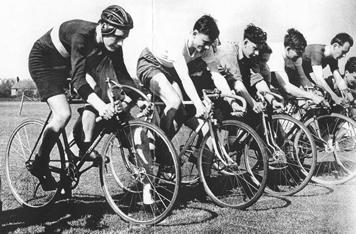
 - photo: Mike Buck |
When Bill first sent us the photos now in the Back Room, he mentioned that the 1952 Wakefield used the Vindskreenviper wing. However, seeing the two pictures side by side, as we've displayed them, came to him, in his words, as "a real
'wake-up' call." He goes on:
"I had never put the Vindskreenviper and the Wakefield
photograph together [...] and a problem
leapt out of the page at me. Vindskreenviper has
straight tips and the Wakefield has tapered tips. The
Wakefield is NOT using the Vindskreenviper wing!
"This
caused me to go back into my notes, because I
distinctly remember using the Vindskreenviper wing and
stab on my 1952 Wakefield. My notes indicate the Mark
1 version of the 1952 Wakefield did use the
Vindskreenviper wing and stab, which I had repaired
after the major crash at Fairlop in 1951. But the real
clincher is that this Wakefield was lost OOS and still
going up at the Southern Area Rally in March 1952 and
was never returned. The worst part of it is that I
have a ¾ front view of this model taking off, but it
is impossible to see the wing shape.
"The reason I used
the Vindskreenviper wing and stab was to quickly put
together a Wakefield for the beginning of the 1952
season. The areas of the Vindskreenviper wing and stab
were 209 and 76.5 square ins. giving a total of 285.5
square ins. The Wakefield rules, current at that time,
were that the total area was to be between 263.5 and
294.5 square ins. so Vindskreenviper 2 was near the
top end of the rules.
"With the loss of the Wakefield I had to build a new
one and also had to build a new Jetex model. Thus the
Wakefield [pictured] is the
Mark 2 version which uses a wing related to Firebird
that I built at the same time. The only difference
between the Firebird and the Wakefield wings is that
the Wakefield has a longer centre section span, but
they were built using the same plan.
"Firebird is the
model published in the 1953 Zaic Yearbook."
And we have
a plan (contributed by Bill himself) of his Firebird from that same Yearbook in our